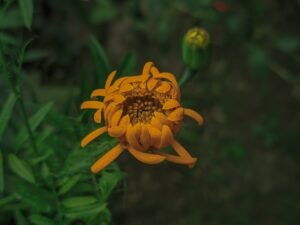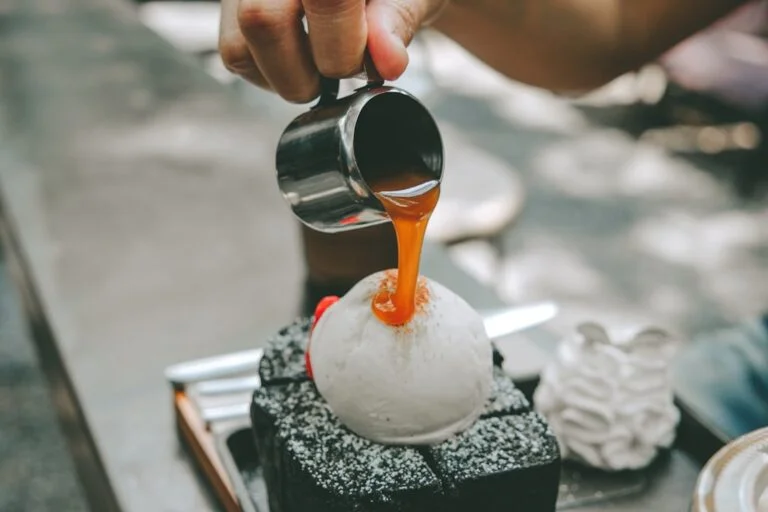March is a month that signifies the arrival of spring, and one of the most iconic flowers associated with this time of year is the daffodil. With its vibrant yellow petals and delicate fragrance, the daffodil brings a sense of joy and renewal to gardens and landscapes around the world. In this article, we will explore the history, significance, and various aspects of daffodils in March.
Key Takeaways
- Daffodils have a long history and are significant in March as a symbol of spring and renewal.
- There are many different varieties of daffodils, each with their own unique characteristics and colors.
- Growing and caring for daffodils in your garden is relatively easy, and they can thrive in a variety of conditions.
- Daffodil festivals and events are held around the world, celebrating the beauty and significance of these flowers.
- Daffodils have symbolic meaning in literature and art, often representing hope, rebirth, and new beginnings.
The History and Significance of the Daffodil in March
The daffodil has a rich history that dates back thousands of years. It is believed to have originated in the Mediterranean region and was cultivated by ancient civilizations such as the Greeks and Romans. In Greek mythology, the daffodil was associated with the story of Narcissus, a young man who fell in love with his own reflection and was transformed into a flower by the gods.
In many cultures, the daffodil is seen as a symbol of rebirth and new beginnings. Its emergence in March coincides with the arrival of spring, a season that represents growth and renewal. The daffodil’s bright yellow color is often associated with sunshine and happiness, making it a fitting flower to celebrate the end of winter and the start of a new season.
The Different Varieties of Daffodils and Their Characteristics
Daffodils come in a wide variety of shapes, sizes, and colors. The most common type is the trumpet daffodil, which features a large trumpet-shaped center surrounded by six petals. Other popular varieties include the double daffodil, which has multiple layers of petals, and the miniature daffodil, which is smaller in size but equally charming.
Each variety of daffodil has its own unique characteristics. For example, the ‘King Alfred’ daffodil is known for its large size and vibrant yellow color, while the ‘Ice Follies’ daffodil has white petals with a pale yellow center. Some daffodils also have fragrant blooms, adding an extra sensory experience to your garden.
How to Grow and Care for Daffodils in Your Garden
| Aspect | Information |
|---|---|
| Planting Time | Autumn or early winter |
| Soil Type | Well-drained soil |
| Sunlight | Full sun to partial shade |
| Watering | Regular watering, but avoid overwatering |
| Fertilizing | Use a balanced fertilizer in the fall and spring |
| Deadheading | Remove spent flowers to encourage more blooms |
| Dividing | Divide bulbs every 3-5 years to prevent overcrowding |
| Pests and Diseases | Watch for bulb rot, narcissus fly, and slugs |
Daffodils are relatively easy to grow and care for, making them a popular choice for both experienced gardeners and beginners. Here are some tips for planting and caring for daffodils in your garden:
1. Choose a sunny location: Daffodils thrive in full sun or partial shade, so choose a spot in your garden that receives at least six hours of sunlight each day.
2. Prepare the soil: Daffodils prefer well-drained soil, so make sure to amend the soil with organic matter such as compost or peat moss before planting.
3. Plant the bulbs: Dig a hole that is two to three times deeper than the height of the bulb and place the bulb in the hole with the pointed end facing up. Space the bulbs about six inches apart to allow for proper growth.
4. Water regularly: Daffodils require regular watering, especially during dry periods. Water deeply once a week, making sure to saturate the soil around the bulbs.
5. Fertilize annually: Apply a balanced fertilizer in early spring before the daffodils start to bloom. This will provide them with the nutrients they need for healthy growth.
6. Deadhead spent blooms: Once the daffodils have finished blooming, remove the spent flowers to prevent seed production and encourage bulb growth for the following year.
Daffodil Festivals and Events Around the World
Daffodil festivals and events are held around the world to celebrate the beauty and significance of these flowers. These events often feature daffodil displays, parades, live music, and other activities for the whole family to enjoy. Here are some popular daffodil festivals and their locations:
1. The Daffodil Festival in Gloucester, Virginia, USA: This annual event takes place in early April and features a parade, live entertainment, arts and crafts vendors, and a daffodil show.
2. The Daffodil Festival in Thriplow, England: Held in late March or early April, this festival showcases over 10,000 daffodils in bloom. Visitors can enjoy guided walks, live music, and traditional English food.
3. The Daffodil Festival in Nantucket, Massachusetts, USA: This festival takes place in late April and includes a daffodil parade, antique car show, art exhibits, and a flower show.
The Symbolic Meaning of Daffodils in Literature and Art

Daffodils have long been a source of inspiration for poets, writers, and artists. One of the most famous examples is the poem “I Wandered Lonely as a Cloud” by William Wordsworth, which describes the poet’s encounter with a field of daffodils. The poem celebrates the beauty and joy that daffodils bring to the natural world.
In art, daffodils are often depicted as symbols of hope, rebirth, and new beginnings. They are frequently used in paintings and illustrations to represent the arrival of spring and the promise of warmer days ahead. The vibrant yellow color of daffodils also adds a cheerful element to any artwork.
Daffodils in Medicine: Their Benefits and Uses
Daffodils have been used for medicinal purposes for centuries. They contain compounds called alkaloids, which have been found to have various health benefits. Here are some traditional and modern uses of daffodils in medicine:
1. Traditional uses: In traditional medicine, daffodils were used to treat respiratory conditions such as coughs and colds. They were also believed to have diuretic properties and were used to promote urination.
2. Cancer research: Daffodils contain a compound called galantamine, which has been studied for its potential anti-cancer properties. Research has shown that galantamine can inhibit the growth of cancer cells and induce apoptosis, or programmed cell death.
3. Alzheimer’s disease: Galantamine is also used in the treatment of Alzheimer’s disease. It is believed to improve cognitive function and memory by increasing the levels of acetylcholine, a neurotransmitter that is depleted in people with Alzheimer’s.
The Role of Daffodils in Springtime Traditions and Celebrations
Daffodils play a significant role in springtime traditions and celebrations around the world. In many cultures, they are seen as symbols of good luck, prosperity, and new beginnings. Here are some examples of how daffodils are incorporated into these events:
1. St. David’s Day in Wales: On March 1st, the people of Wales celebrate St. David’s Day, the national day of Wales. Daffodils are the national flower of Wales and are worn or displayed as a symbol of Welsh pride.
2. Chinese New Year: In Chinese culture, daffodils are associated with the Lunar New Year and are believed to bring good fortune and prosperity for the coming year. They are often used in decorations and given as gifts during this time.
3. Easter: Daffodils are commonly associated with Easter, which falls in March or April each year. They are often used in Easter floral arrangements and decorations, symbolizing the resurrection and new life.
Daffodil Crafts and DIY Projects for Springtime Decor
Daffodils can inspire a variety of crafts and DIY projects that can add a touch of springtime to your home. Here are some ideas for daffodil-inspired crafts:
1. Paper daffodils: Create your own daffodils using colored paper or cardstock. Cut out petal shapes and attach them to a stem made from a green pipe cleaner or wire. Arrange the petals to resemble a daffodil and display them in a vase or use them as table decorations.
2. Daffodil wreath: Make a wreath using artificial daffodils and a foam or wire wreath form. Attach the daffodils to the form using hot glue or floral wire, and add additional greenery or ribbon for extra decoration.
3. Daffodil garland: String together artificial daffodils to create a garland that can be hung on walls, mantels, or staircases. Add other springtime elements such as butterflies or bees for added visual interest.
Daffodil Photography Tips: How to Capture the Beauty of March Blooms
Daffodils provide a beautiful subject for photography, with their vibrant colors and unique shapes. Here are some tips for capturing stunning photos of daffodils:
1. Choose the right time of day: The best time to photograph daffodils is during the golden hour, which is the hour after sunrise or before sunset. The soft, warm light during this time will enhance the colors of the flowers and create a more pleasing image.
2. Get up close: Daffodils have intricate details that can be captured up close. Use a macro lens or set your camera to macro mode to capture the fine details of the petals and center of the flower.
3. Experiment with angles: Try shooting from different angles to find the most interesting composition. Get down low and shoot from ground level to capture the daffodils from a unique perspective.
4. Use a shallow depth of field: To create a dreamy, blurred background, use a wide aperture (low f-stop number) to create a shallow depth of field. This will make the daffodils stand out and draw attention to the main subject.
Daffodil-inspired Recipes: Delicious Treats to Celebrate the Season
Daffodils can also inspire delicious treats that can be enjoyed during the spring season. Here are some recipes for daffodil-inspired treats:
1. Daffodil cupcakes: Make vanilla cupcakes and decorate them with yellow frosting to resemble daffodils. Use a piping bag and a star-shaped tip to create the petals, and add a small piece of orange candy or frosting for the center.
2. Daffodil cookies: Bake sugar cookies in the shape of daffodils using a flower-shaped cookie cutter. Decorate the cookies with yellow icing and add details using colored icing or edible markers.
3. Daffodil tea sandwiches: Make tea sandwiches using thinly sliced bread, cream cheese, and cucumber or smoked salmon. Cut the sandwiches into flower shapes using a flower-shaped cookie cutter, and garnish with fresh dill or chives to resemble daffodils.
Daffodils are not only beautiful flowers but also hold great significance in March. From their origins in ancient civilizations to their role in springtime traditions and celebrations, daffodils bring joy and renewal to gardens and landscapes around the world. Whether you choose to grow them in your garden, attend a daffodil festival, or incorporate them into crafts and recipes, daffodils are sure to brighten your March and remind you of the beauty of spring.
If you’re interested in reading more captivating articles, check out this intriguing piece on the demise of esteemed actor Lee Sun-kyun, which has left the cinema world in grief. It’s a tragic loss that has deeply impacted the industry. To learn more about this heartbreaking news, click here.




















+ There are no comments
Add yours